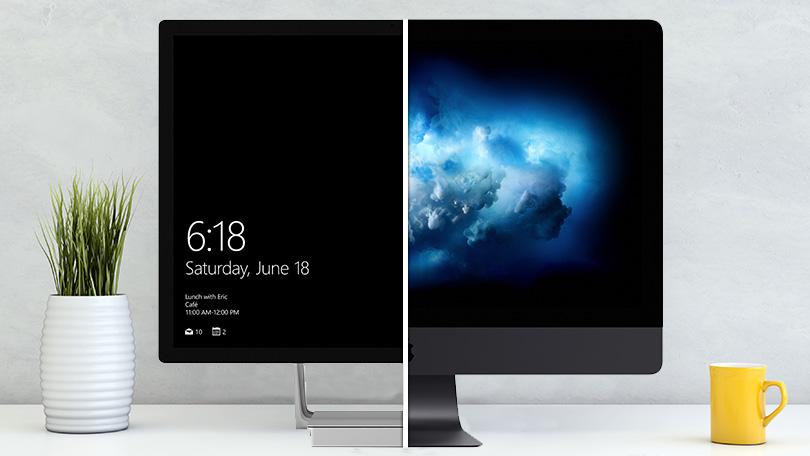Apple Mac versus Windows 10 PC: here is how Apple and Microsoft are fighting over power users

Apple and Microsoft may have diversified over decades of learning about new emerging markets and pushing the boundaries of consumer tech, but one thing that both companies will never stop fighting for, with incessant, and relentless passion, is winning over power users.
For that long forgotten period of the 1990s, during which power users scrambled to assemble machines remotely close to what Steve Jobs sparked, during his NeXT venture, helping kickstart Silicon Graphics, companies like Apple and Microsoft didn’t really have an interest in power computing, at least not in the traditional sense.
Microsoft was very much focused on its software, and Apple was busy getting back on its feet without Jobs at the helm, at least temporarily.
In the wake of the legendary success of the PowerPC processor, and the rise of high-performance computing-focused companies like nVidia (aka. “NVIDIA”, “Nvidia” and any such variation...), AMD, and MSI, Apple knew to tap a market filled with enthusiasts who were more than willing to have an alternative to building their own high-powered Windows PCs, especially when run by an operating system as streamlined, user-friendly, and stable as the Mac OS.
While the price tag was high, products like the Power Mac, and the Mac Pro turned into huge successes, primarily thanks to a newborn 3D animation industry taking Hollywood by storm.
Fast-forward to 2018, Microsoft is a full-blown hardware company, geared towards consumers, with a bias towards high-performance, and Apple is now aggressively pursuing the same market, much like it did in the 90s.
The Apple iMac Pro and the Microsoft Surface Studio are two remarkable products that target users with specific requirements and skill sets. Creative professionals once aspired to run sophisticated software like Alias|Wavefront Maya, and Newtek Lightwave. Now, a similarly focused new generation of power users, expect machines like the iMac Pro to let them run, flawlessly, advanced graphic suites like Adobe Creative Cloud, and Autodesk Maya (How times have changed!).
The only category of power users that neither Microsoft or Apple are interested in, are crypto-miners, who are, interestingly enough, the unexpected, yet fortuitous target audience of Nvidia, courtesy of the unmatched performance of its GPUs.
Of course, we can’t forget that while the focus of both rival tech giants has been on hardware, the software that powers the new devices is just as important, and both Mac OS and Microsoft Windows 10 have been consistently one-upping each other at every opportunity, with performance and security, as the two primary points of contention.
The latest punch will be delivered soon by Microsoft, in the form of a “ultimate performance” mode, which helps manage high-end resources, and make better use of high spec’d PCs, such as those with more than 32GB of RAM, powered by multiple CPU stacks, and SLi-connected graphic cards.
Needless to say, this new performance setting won’t be available on battery-powered devices like Microsoft Surface Pro, and other laptop devices. Instead, it will be targeting high-end workstations, like the Surface Studio, as well as other custom workstations and server machines.
The update will not only be available to Windows 10 Pro users, but also, and especially, “Windows 10 Pro for Workstations”, which is a dedicated version of Windows 10, designed for high-end computing, and released last year.
Ready to shop?
Looking for the most powerful desktop created by Apple? PortableOne is where you can buy the All-New Apple iMac Pro a production powerhouse for high-end creative professionals, with endless possibilities, and unprecedented specs.